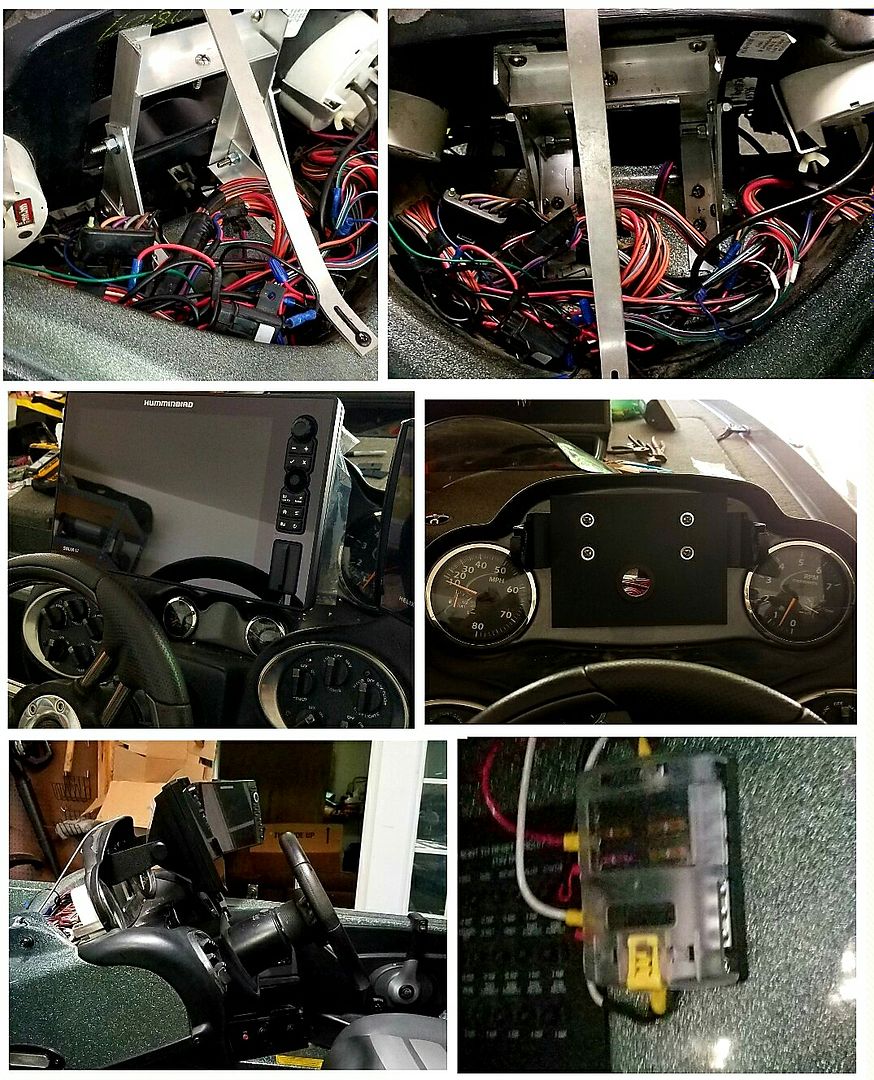... maybe I'll get good at it.
Sooo... Decided to re-wire my electronics top-to-bottom. Last time I made some changes on the end(s) of the circuit(s). This time I'll be rewiring from the battery to the MFD.
Gonna document it here for two reasons.
#1) If I do something stup.... dum.... incorrect hopefully the electrical engineers among us...{hint... hint... MJ3} will grab me by the collar n' get me going in the right directions.
#2) If someone else has been considering rewiring but wasn't sure where to start - maybe the information contained in this post will help.
A lot of the stuff is still on the truck(s) headed this way from where ever but I'll post pics of what I've got so far.
The goal of this li'l project is to eliminate any possibility that the 12v feed is the source of any interference that may show up in the images.
Hats off to MicahaelJ3 for helping me with this project. I'm no electrical engineer - he is.
I'm eliminating the dual buss bar that I've used since 2014. In it's place I'm using a Blue Sea #5025 6 position common source fuse block w/negative. The "Common source" means I have only one 12V lead that feeds the 6 positions. The "w/Negative" means I can terminate both positive and negative cables at the fuse block. This may seem like a no brainer to some but it's not a common wiring practice. It does lead to "issues" when routing the wires but I voted in favor of the simplicity of routing sheathed cable to a common destination vs splitting the sheathing much further up the cable. I suppose a case of 6 of one and 1/2 dozen of the other.
Speaking of 6 position common source w/negative fuse block.... The 12v lead attaches at the top where the +'s are. The 12v Negative lead attaches to the bottom where the -'s are. The negative leads from each piece of equipment connects to the six lower position on the block leaving the upper six positions with fuse slots for the ATC fuses. On the left is the lock on cover that has label positions for each fuse position.
In one of my other post I mentioned "ganged" spade connectors. While the power switch for my electronics was not ganged it did utilize spade connectors. But just thought I'd show what ganged spade connectors look like. They, on occasion, will come in handy when messing with factory wiring situations.
Multiple spade connectors....
Multiple spade connectors ganged up....
As stated my old switch was a spade connector style and while I doubt it was causing any problems. The goal of this project is to eliminate things that "could" be a problem. Soooo.... The old spaded switch looked like this....
I'm replacing it with a lighted switch(the old one was lighted as well) switch that accepts ring terminals. This, I hope, eliminates any possibility of a loose connection.
Switch plus heat shrink crimp style ring terminal...
I'm installing this fuse block on the side of the drivers console. There's really no "good" place and only a few that it'll even fit... even though it's pretty small.
It's going on the other side of this console.
Which, although I missed with the photo, you can kinna see where I sanded it with 50g paper to prepare it for epoxy bonding.
Prepped the back of the fuse block as well. Then wiped both down with lacquer thinner.
I use these, and lots of'em to keep the wiring secured. Because I'm working in the console area there's really no place to use bolts/nuts, screws or other types of fasteners. These are Anchor brand self-stick type. I've used the self-stick from Lowes/Home Depot and usually just soak'em in thinner, remove the self-adhesive pad and epoxy them in place. Because these are Anchor brand I'm gonna try using their self-adhesive feature. If it doesn't work.... I'll epoxy them in place.
If there's no interest in this project post someone please be kind enough to let me know n' I'll not bore folks with the details... Thanks!













 Reply With Quote
Reply With Quote








 No matter what we do, we always find a fault with something.
No matter what we do, we always find a fault with something.









